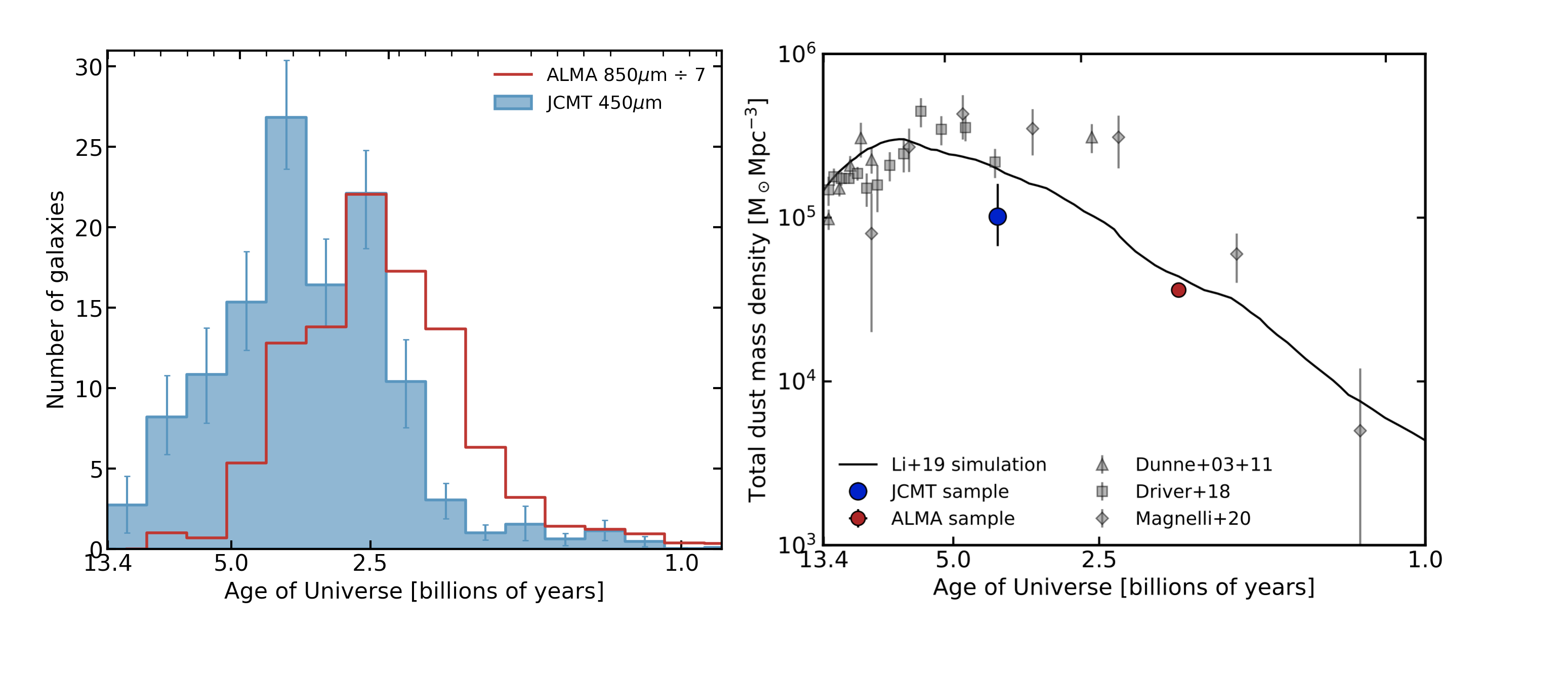CEA News, January 2021
The dust content of distant star-forming galaxies
Around half of the star formation that has ever occurred in the Universe was obscured by dust, therefore, to obtain a more complete view of galaxy formation and evolution, it is crucial to understand the nature, origin and evolution of this dust-obscured activity in galaxies. In such galaxies, the ultraviolet/optical radiation is absorbed by dust grains (which form in the atmospheres of massive stars and supernovae) and re-radiated in the far-infrared/sub-millimetre wavelengths, thus they are termed as sub-millimetre galaxies. Sub-millimetre galaxies represent some of the most actively star forming galaxies that have ever occurred, forming stars 100-1000 times quicker than our Milky Way. Several lines of evidence suggest that these extreme galaxies are an important element for constraining models of galaxy formation and evolution.
A team of researchers led from the Centre for Extragalactic Astronomy Durham University used large surveys from the Atacama Large Millimeter Array (ALMA) and James Clerk Maxwell Telescope (JCMT) to detect these far-infrared luminous sources at longer and shorter microwave wavelengths, respectively. The combination of two wavelengths allows for the construction of a more complete view of luminous far-infrared activity in the Universe over a wider time frame. As seen in the figure, the longer-wavelength ALMA sample peaks much earlier after the Big Bang than those selected at shorter wavelength with JCMT. This allowed researchers to combine the two samples and sample the cosmic noon - a period when the total star formation was at its peak.

By comparison of this uniform sample of dusty star-forming galaxies to simulations, researchers found that the dust content in galaxies is dependent on the gas reservoirs available for star-formation and the time taken to destroy the dust by shock waves from supernovae, consumption by star-formation or grain collisions. The figure shows that the total dust mass density increases and peaks at around 6 billion years after the Big Bang, before declining to present day. This is due to the decline in star-formation as quenching is onset in massive galaxies, limiting metal enrichment and grain growth.

